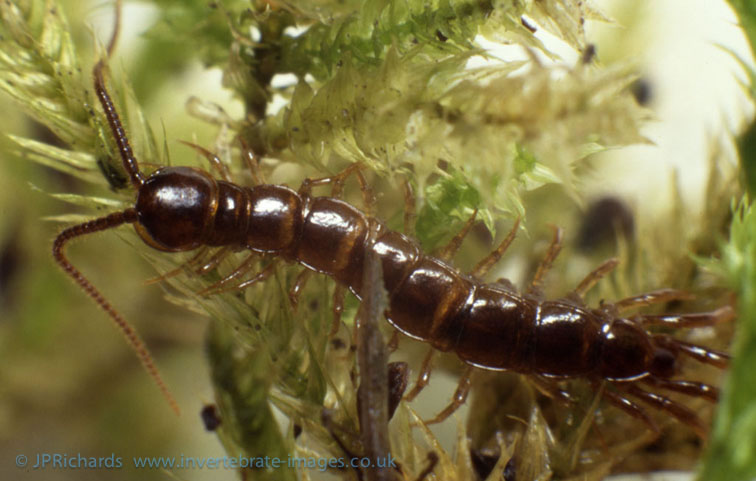Lithobius muticus C.L. Koch, 1847
Synonyms
Lithobius (Lithobius) muticus C.L. Koch, 1847
Status:
- GB IUCN status: Least Concern
- GB rarity status: Nationally Scarce
ID Difficulty
Identification
Lithobius is a difficult genus and at least 17 species are known from Britain and Ireland.
This is one of seven 'smaller species' with 2 + 2 forcipular teeth that lack backward projections on tergites 9, 11 and 13. Lithobius muticus is typically very dark in colour, almost black (as L. calcaratus). Males, and to a lesser extent, females, are characterised by their very broad heads and presence of a single claw on the last legs.
More information to allow accurate identification is given in the published identification keys by Tony Barber (2008 & 2009).
Distribution
Lithobius muticus has a very distinct south-eastern distribution, with a strong cluster of records in the home counties. Elsewhere there are widely scattered records in northern England north to West Lancashire (where it was found with the northern millipede Melogona voigtii; Gregory & Garnham, 2020, pg.53) and a few sites in South Wales (e.g. during the BMIG 2018 field meeting). There is a possible record from a single site in Ireland (Co. Sligo).
Habitat
It is a characteristic centipede of rural sites, typically deciduous woodland, but may stray into adjacent grasslands.
It is typically found under dead wood or among leaf litter, but it is also readily taken in pitfall traps.
This account is based on the 'Centipede Atlas' (Barber, 2022).
Links
ChiloBase 2.0 - World Catalogue of Centipedes: https://chilobase.biologia.unipd.it/searches/result_species/2210






